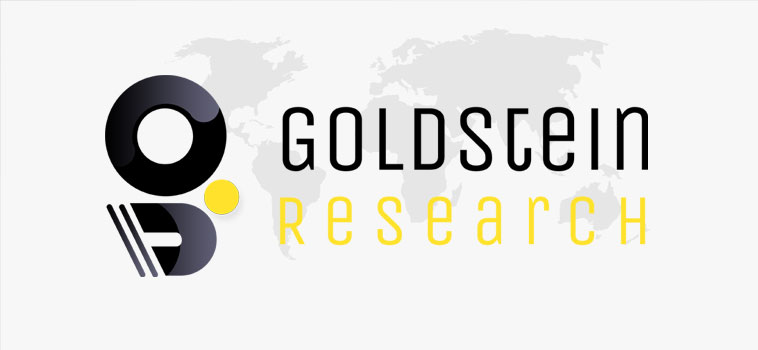Sterility Testing Market is augmented by the evolution in biotechnology and pharmaceutical industry, high capital investments in R&D in life sciences and an upsurge in the number of drug approval cases. According to Goldstein Research, global sterility testing market size is projected to reach USD 1.3 billion by 2025, expected to garner a compounded annual growth rate of 12.1% over the forecast period 2017-2025. Further, global sterility testing market is segmented on the basis of product, test, application, and geography.
Based on geography, global sterility testing industry is dominated by North America with a market share of more than 44.0% in 2017, owing to the huge presence of pharmaceutical and medical device companies in the region. Whereas, Asia Pacific region tends to grow at fastest CAGR on account of outsourcing pharmaceutical manufacturing in the Asian countries such as China & India. Moreover, India Pharmaceutical Industry is estimated to rise at a CAGR of 15.9% over the forecast period to reach USD 76.7 billion by 2025.
Browse Full Report: Sterility Testing Market
Technological Advancements
Developments in sterility testing technology in recent years have allowed the growth of new sterility test methods that produce accurate and reliable test results in less time and with less operator involvement than the currently prescribed methods. Pharmaceutical and medical device manufacturers may benefit from using such sterility test methods with speedy and innovative detection capabilities.
Market Segmentation
For the purpose of -depth analysis, global sterility testing market is segmented as follows:
By Product
- Services
- Kits And Reagents
- Instruments
By Test
- Direct Inoculation
- Membrane Filtration
- Other Sterility Tests
By Application
- Medical Devices Manufacturing
- Pharmaceutical And Biological Manufacturing
- Other Applications
By Region
- North America (US, Canada) sterility testing market {Market Share (%), Market Size (USD Billion, Adoption Rate (%)}
- Europe (UK, France, Italy, Germany, Spain, Hungary, Sweden, Russia, Poland and Rest of Europe) sterility testing market {Market Share (%), Market Size (USD Billion), Adoption Rate (%)}
- Middle East and Africa (GCC Countries, North Africa, South Africa and Rest of Middle East & Africa) sterility testing market {Market Share (%), Market Size (USD Billion), Adoption Rate (%)}
- Latin America (Brazil, Mexico and Rest of Latin America) sterility testing market {Market Share (%), Market Size (USD Billion), Adoption Rate (%)}
- Asia Pacific (China, Japan, India, Singapore, South Korea, Australia, New Zealand and Rest of Asia-Pacific) sterility testing market {Market Share (%), Market Size (USD Billion), Adoption Rate (%)}
Further, for the in-depth analysis, Global Sterility Testing Market Report encompasses the market growth drivers, market challenges, risk analysis, market attractiveness, BPS (Base Point Scale) analysis, Porter’s five force model and SWOT analysis. This market report also includes competitive outlook of some of the major players profiling of companies such asWuXiAppTec, SGS SA, Charles River Laboratories International, Inc., Thermo Fisher Scientific, Inc., Sartorius AG, bioMérieux SA, Merck, Danaher Corporation, Nelson Laboratories, Pacific Biolabs, Gibraltar Laboratories, Toxikon Corporation., Rapid Micro Biosystems, Inc.,BioConvergence LLC, Sigma-Aldrich Co. LLC., Pace Analytical Services, Inc., Baxter Healthcare Corporation, Boston Analytical, Neopharm Labs Inc., and LexaMed LTD.,etc. The company profiles include business strategy, geographical revenue distribution, major information of the companies which encompasses business outlook, products, services strategies according to the ongoing and expected trends in the futureand industries catered, financial analysis of the company and recent developments. Overall, the report represents the global sterility testing market trends along with a market forecast that will help market consultants, technology providers, existing players searching for expansion opportunities, new players searching possibilities and other stakeholders to align their market-centric
Sterility Testing Market is driving on the basis of advancement in branches of healthcare mentioned below:
Medical Device Market
Medical Devices Market estimated at USD 380.0 billion in 2016, which is estimated to reach USD 532.2 billion by 2024, growing at a CAGR of 4.3% over the forecast period 2016-2024. Geographically, Australia Medical Devices Market is expected to reach USD 1.8 billion by 2025, growing at a CAGR of 4.6% over the forecast period 2017-2025. South Korea Medical Device Market is expected to reach USD 5.0 billion by the end of 2025, growing at a CAGR of 6.1% over the forecast period, 2017-2025.
Reprocessed Medical Device Market
Reprocessed Medical Devices Market is impacting the global medical device market on the account of increase in focus on reducing toxic hospital waste and an increase in inclination of market players towards eco-friendly solutions. Moreover, rising global pressure to reduce medical waste for environmental concerns and to decline hospital expenditure, significant demand for reprocessed medical has been observed in recent years, which is likely to boost the growth of Medical Device Reprocessing Market in coming years.
Key queries answered in this global sterility testing market report
- Present and future sterility testing market outlook in the developed and emerging markets
- Investigating various perceptions of the market with the help of Porter’s five forces analysis
- Key market trends across the segment and region in 2015-16 and what would be the expected revenue per segment and region over the forecast period?
- Regional outlook that are projected to witness the fastest growth over the forecast period
- Key developments and strategies employed by the major market players.
- Market opportunities for the prevailing and entry-level players?

